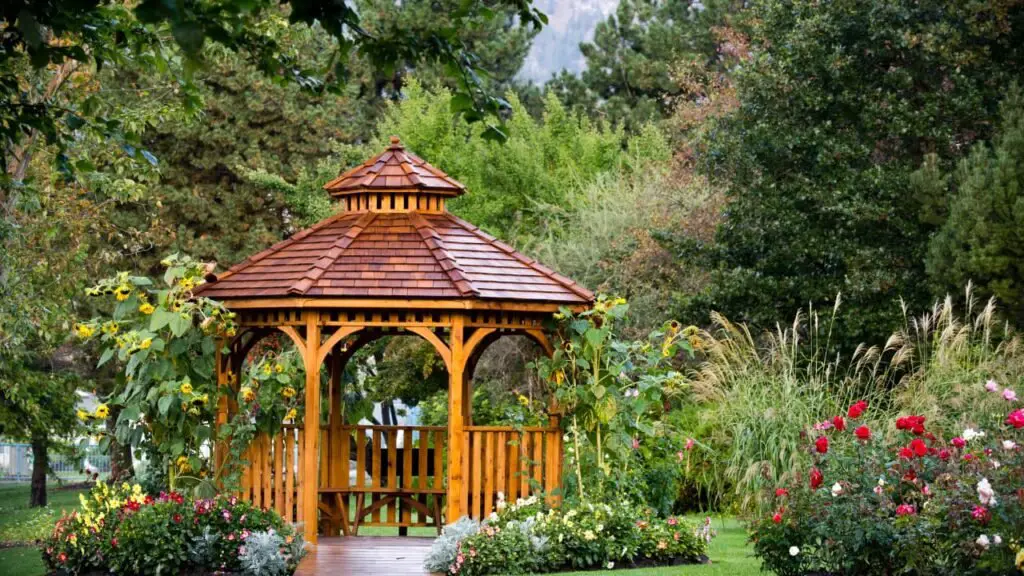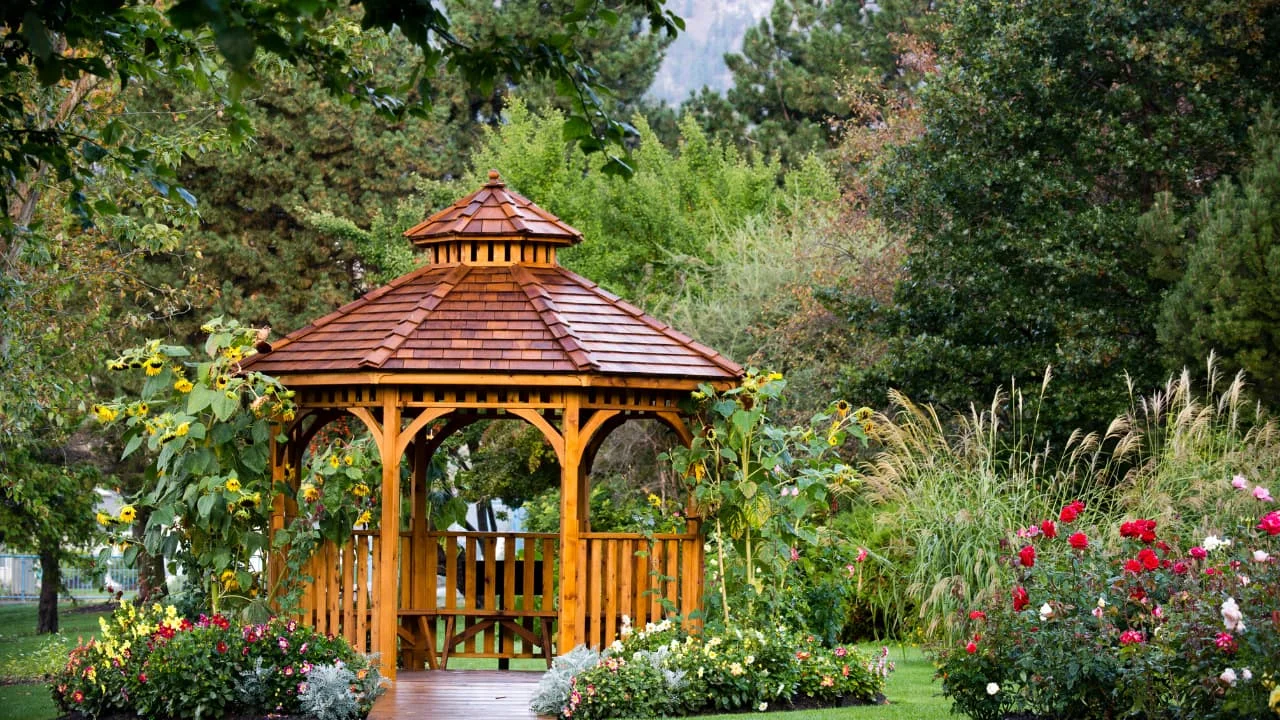Introduction: Can You Paint Cedar?
Are you wondering if cedar wood can be painted to give your projects a fresh, brand-new look? The answer is yes! With the right technique and expert guidance, painting cedar can transform weathered wood decks, wood siding, interior walls, or even furniture into stunning masterpieces.
In this blog post, we will explore essential tips that professionals follow when painting cedar wood.
Key Takeaways 💭
- Yes, cedar wood can be painted. Proper timing, surface preparation, paint selection, and application techniques are important for achieving long-lasting results.
- Surface preparation is crucial – cleaning, sanding, priming (if necessary), and ensuring adequate moisture content before painting will help achieve a smooth finish.
- Choosing the right paint is vital for exterior surfaces exposed to various weather conditions and moisture. Acrylic paint provides exceptional durability and flexibility while enamel-based paints work best for interior walls or furniture with vibrant colors.
- Applying thin, even coats of paint using a brush or sprayer is essential to avoid peeling or cracking. Using appropriate protective gear when spraying as it could overspray depending on equipment use can also protect individuals involved in the process/operation.
Table of Contents

Yes, You Can Paint Cedar
Painting cedar is possible when done correctly.
Proper Timing
Proper timing plays a crucial role in painting cedar wood to ensure long-lasting results. Ideally, you should schedule your cedar painting project during periods of moderate weather – neither too hot nor too cold.
Late spring or early fall tends to be optimal, as temperatures generally range between 50 and 70 degrees Fahrenheit with lower humidity levels.
Before starting any cedar project, it’s essential to consider the moisture content of the wood itself since excessive moisture can lead to peeling and poor adhesion to wood stains over time.
Using a moisture meter is recommended for accurate readings; aim for no higher than 15% moisture content before applying primer and applying paint.
Surface Preparation
Proper surface preparation is critical to ensuring that your cedar project looks great and lasts a long time. Start your prep work by thoroughly cleaning the surface of any dirt, grime, or mildew.
You can use a power washer or simply a bucket of soapy water and a scrub brush. Once clean, inspect the home’s exterior surface for any peeling paint or loose wood fibers.
Next, it’s important to consider whether you need to prime the cedar before painting it. For new cedar projects that have never been pre-primed or painted before, you should always apply two coats of a primer to red cedar first.
For previously painted surfaces with no issues such as peeling or chipping paint, sanding with fine-grit sandpaper may suffice instead of removing all old paint layers. However, if there are existing problems in old coats like blistering then they must be scraped off completely using sandpaper or stripping products before starting on applying a new coat or a two-coat system otherwise the same issues would recur.
Proper surface preparation is essential when painting cedar projects.
Choosing The Right Paint
When it comes to painting cedar wood, choosing the right paint is crucial for achieving a long-lasting and flawless finish.
For exterior surfaces that are exposed to various weather conditions and moisture, acrylic paint is an excellent choice as it provides exceptional durability and flexibility.
Before applying any paint on cedar wood surfaces, make sure to use a primer first. This helps the wood improve adhesion while providing additional protection for wood stains and against moisture and other elements.
Proper Application
To ensure a successful paint job on cedar wood, proper application techniques are crucial. Here are some expert tips for achieving the best results:
- Apply thin, even coats: Thick layers of paint can lead to peeling and cracking. It’s better to apply multiple thin coats, allowing each layer to dry completely before adding the next one.
- Use a paint sprayer: A high-quality paint sprayer gives you more control and ensures even coverage across the entire surface.
- Paint in ideal weather conditions: Avoid painting cedar wood in extreme temperatures or high humidity as it can affect adhesion and drying time.
- Don’t forget to prime: A primer helps the paint adhere better to the surface and provides extra protection against moisture and weathering.
- Follow manufacturer instructions: Always read and follow the instructions on your chosen paint product for the best results.
By following these application tips, you can ensure that your painted cedar projects look great and last longer.
Expert Tips For Reviving Cedar Projects With Paint
Prior to painting your cedar project, it is important to sand and clean the surface thoroughly. This will ensure that the new coat of paint also adheres to exposed wood properly and produces an even finish.
Sanding And Cleaning
Sanding and cleaning are essential steps in reviving old wood and old cedar siding and projects with paint. The following tips will help you get the best results:
- Sand the Cedar: Start by sanding the cedar surface to remove any old paint, dirt, and grime. Use 120-grit sandpaper and sand in the direction of the wood grain to avoid damaging the cedar surface.
- Clean the Surface: After sanding, clean the cedar surface thoroughly with a non-residue cleaner or mild detergent to remove any remaining dust, dirt, or debris. Rinse well with water and let it dry completely before proceeding.
- Inspect for Peeling: Inspect the cedar surface for peeling or loose paint. Remove any loose paint using a scraper or putty knife and then sand it gently.
- Apply Primer: For better adhesion and lasting results, apply a high-quality primer that is specially designed for use on cedar wood.
- Let it Dry: Allow sufficient drying time for both your primer coat and your topcoat of paint before applying them.
By following these sanding and cleaning tips carefully, you can ensure that your painted cedar project looks great for years to come!
Thin, Even Coats
Thin, even coats are essential to achieving a smooth and flawless finish when painting cedar. Applying too thick of a single coat of paint can result in peeling or cracking, so it’s crucial to apply the paint sparingly.
One helpful tip is to thin out your paint with a little bit of water to help it spread more evenly over the porous wood part’s surface. Another option is to use an acrylic-based primer before applying one more coat of paint of your chosen color.
This will provide better adhesion for the paint job and ensure that the color lasts longer without fading or chipping away.
Use Of Paint Sprayer
Using a paint sprayer can be an excellent option for reviving cedar projects. It allows you to apply thin, even coats of paint quickly and efficiently, resulting in a smooth and professional-looking finish.
However, it’s crucial to choose the right type of sprayer and nozzle size for your project.
When using a paint sprayer oil primer on cedar wood, it’s important to keep in mind that moisture can impact the stain and adhesion and ultimately lead to peeling over time. Therefore, ensure that the cedar is completely dry before spraying any primer or paint onto its surface.
Additionally, remember to wear appropriate protective gear such as goggles and gloves while applying the spray coating since it can easily travel with wind or over-spraying from your equipment.
Conclusion
In conclusion, if you’re wondering whether or not you can paint cedar, the answer is a definite yes! With proper surface preparation and the right type of paint, you can give your cedar projects a fresh coat of paint and new life.
Expert tips like sanding and cleaning, using thin, even coats of paint, and utilizing a paint sprayer can also help revive your cedar pieces. Whether it’s weatherboards or furniture, painting cedar is a great way to protect and enhance its western red cedar natural beauty.
FAQs:
Can cedar be painted?
Yes, cedar can be painted with the right preparation and techniques.
What are some tips for preparing cedar for painting?
To prepare cedar for painting, it’s important to thoroughly clean the surface, sand it to create a smooth finish, and apply a primer specifically designed for use on wood surfaces.
Are there any special considerations when choosing paint colors for cedar projects?
When choosing paint colors for cedar projects, it’s important to consider the natural color of the wood and choose a color that complements it well. It’s also recommended to use high-quality exterior-grade paints that will hold up well over time.
How often should I repaint my cedar project?
The frequency of repainting your red cedar project will depend on several factors including climate conditions and exposure to sunlight or moisture. Generally speaking, you should aim to repaint red cedar every 5-7 years or as needed when signs of wear or weathering become noticeable.

